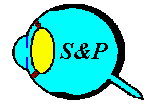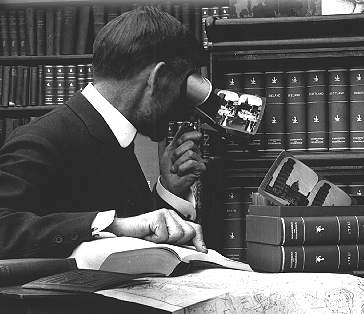

The first several pages will try to illustrate how depth can be portrayed in two-dimensional art. Many representational paintings give a very strong feeling of depth despite the fact that they are painted on flat surfaces that lack any depth.
 In trying to depict depth, there are several
restrictions on the techniques that an artist can use. First, paintings and drawings are
two-dimensional. There is no actual depth in the artwork so the artist must understand, at
least intuitively, what information is in the environment that allow us to perceive depth.
These sources of information are commonly called depth or distance cues. A
consequence of the two-dimensional nature of painting and drawing is that we lose all the
depth information that comes from the fact that we have two eyes. These binocular,
or two-eye, depth cues require true depth and thus we will not discuss them in context
with paintings or drawings. For example, there is the binocular depth cue called disparity.
Disparity arises from the fact that our two eyes have a slightly different view of the
world. To allow you to see disparity requires either real depth or two images developed as
if from different positions like our eyes. This latter approach is illustrated in the
photograph from the California Museum of Art. The person is looking at a slide with two
images, much like a viewmaster, with each image being taken from a slightly different
position to allow the brain to see disparity and, thus, see a very realistic
three-dimensional picture.
In trying to depict depth, there are several
restrictions on the techniques that an artist can use. First, paintings and drawings are
two-dimensional. There is no actual depth in the artwork so the artist must understand, at
least intuitively, what information is in the environment that allow us to perceive depth.
These sources of information are commonly called depth or distance cues. A
consequence of the two-dimensional nature of painting and drawing is that we lose all the
depth information that comes from the fact that we have two eyes. These binocular,
or two-eye, depth cues require true depth and thus we will not discuss them in context
with paintings or drawings. For example, there is the binocular depth cue called disparity.
Disparity arises from the fact that our two eyes have a slightly different view of the
world. To allow you to see disparity requires either real depth or two images developed as
if from different positions like our eyes. This latter approach is illustrated in the
photograph from the California Museum of Art. The person is looking at a slide with two
images, much like a viewmaster, with each image being taken from a slightly different
position to allow the brain to see disparity and, thus, see a very realistic
three-dimensional picture.
The next two pictures are single-image random dot stereograms or SIRDS which will illustrate how depth is generated using binocular disparity. They were created by Peter Chang and Gareth Richards in England. There are actually two sets of random dots overlayed on these images, one for each eye. Click on the left image to make it larger and then try to relax your eyes and try to "look through" your monitor screen. What often helps is to place your nose on the screen and slowly move backwards. Most people report seeing a three-dimensional face. Some people cannot relax their eyes enough (though I find it easier on the screen than on the printed SIRDS) so I have included a second image, that of a cone. For this image instead of relaxing your eyes, cross them slowly. Eventually you will see a cone that is pointed towards you. Try one or the other or both.
If you are interested in these binocular cues to depth, refer to a textbook in the area, e.g. Coren, Ward & Enns (1994) or Levine and Shefner (1991).
All of the other cues to depth are called monocular or one-eye. One such cue, the relative motion of objects at different distances, can be a powerful cue to depth but is unavailable to the painter. Perception of motion requires only one eye and is thus monocular. The the artist is even more limited than, say, television or movies which use moving pictures. So that you can get some idea how motion can give a powerful sense of depth, here is a computer generated movie of a flight through the Grand Canyon. Even though the picture is low resolution and small, most viewers will report that the depth of the canyon is vivid. Nearby portions of the canyon are faster moving than more distant parts (a motion cue called motion parallax), and the direction of motion can be told by where the picture seems to expand from (Gibson, 1950). {You can find out more about motion parallax here.}
The artist, in trying to paint or draw, is, therefore, limited to depth cues that (a) need no more than one eye to work, and (b) do not require a moving world. Fortunately there are a collection of such depth cues, a subset of monocular cues called pictorial cues by some authors (Goldstein, 1989). It is these depth cues that will be discussed in this tutorial. Before continuing, I should correct the impression that some readers may have that the depth generated on paintings is inferiour. Actually if you would look at a detailed painting using many of the depth cues discussed in this tutorial with a tube (like in the center of role of paper towels) the impression of depth can be very realistic. Seeing a painting hanging on a wall probably has much to do with weakening the impression of depth.
The first depth cue illustrated here is called interposition. It is discussed on the next page.